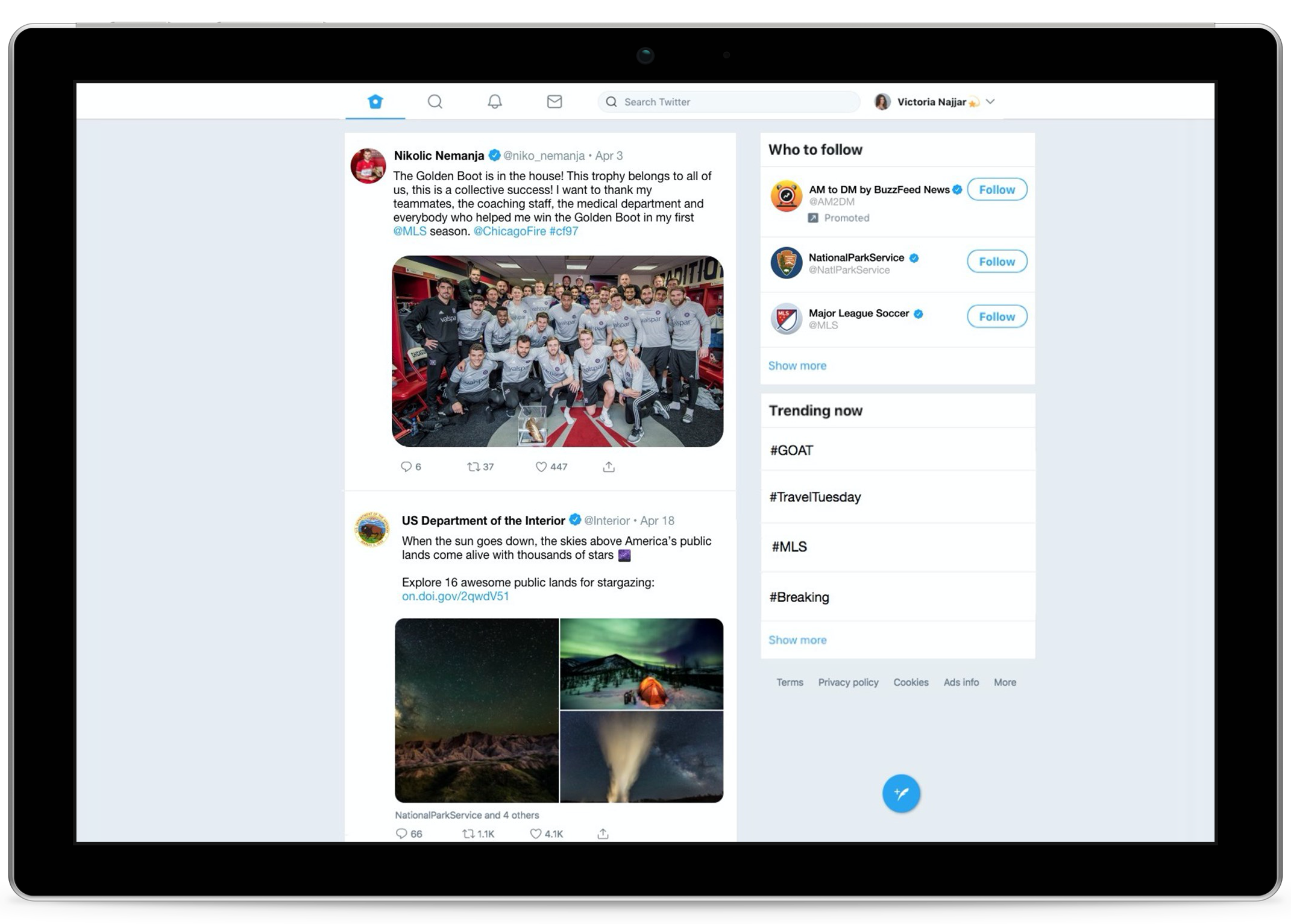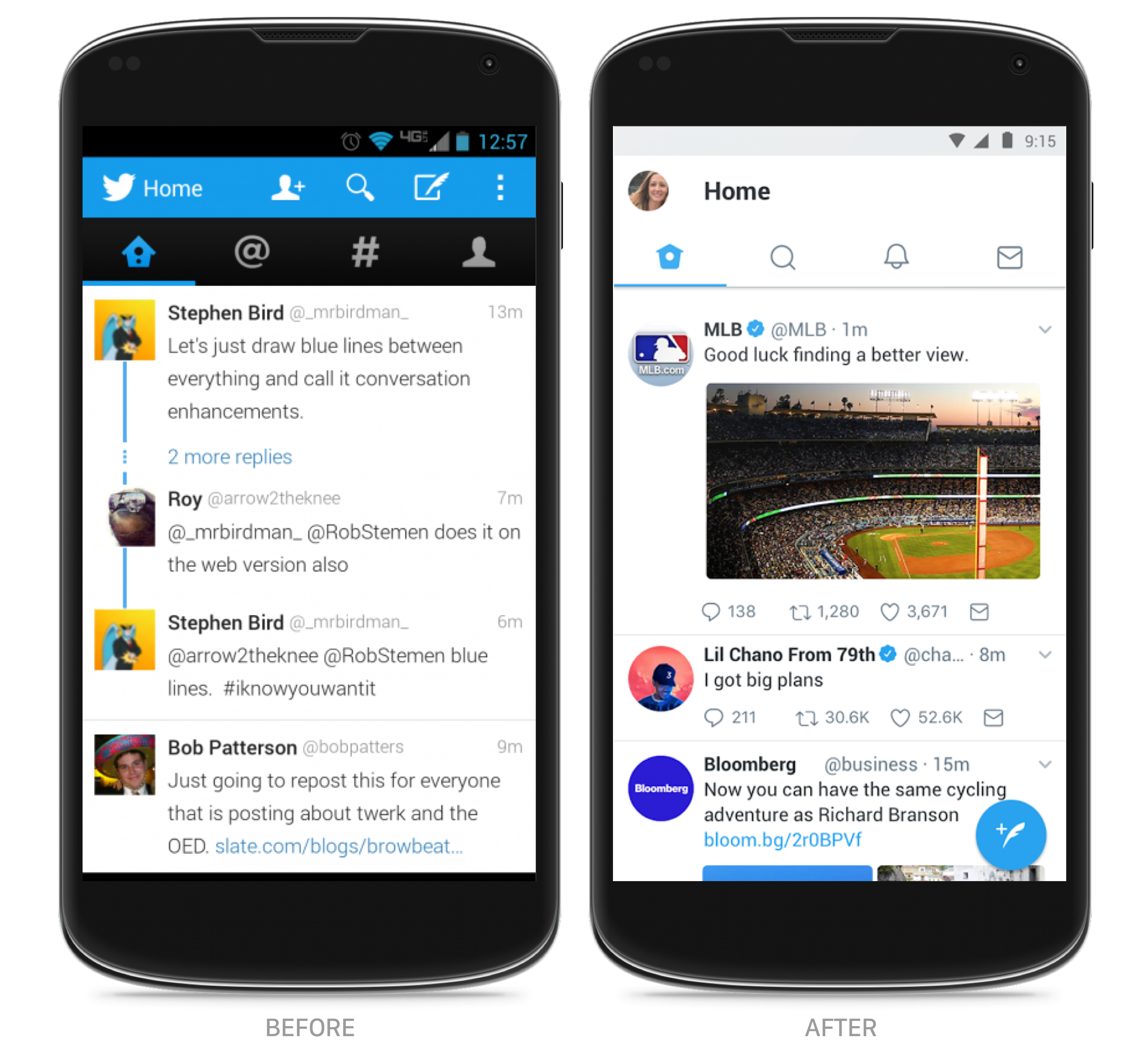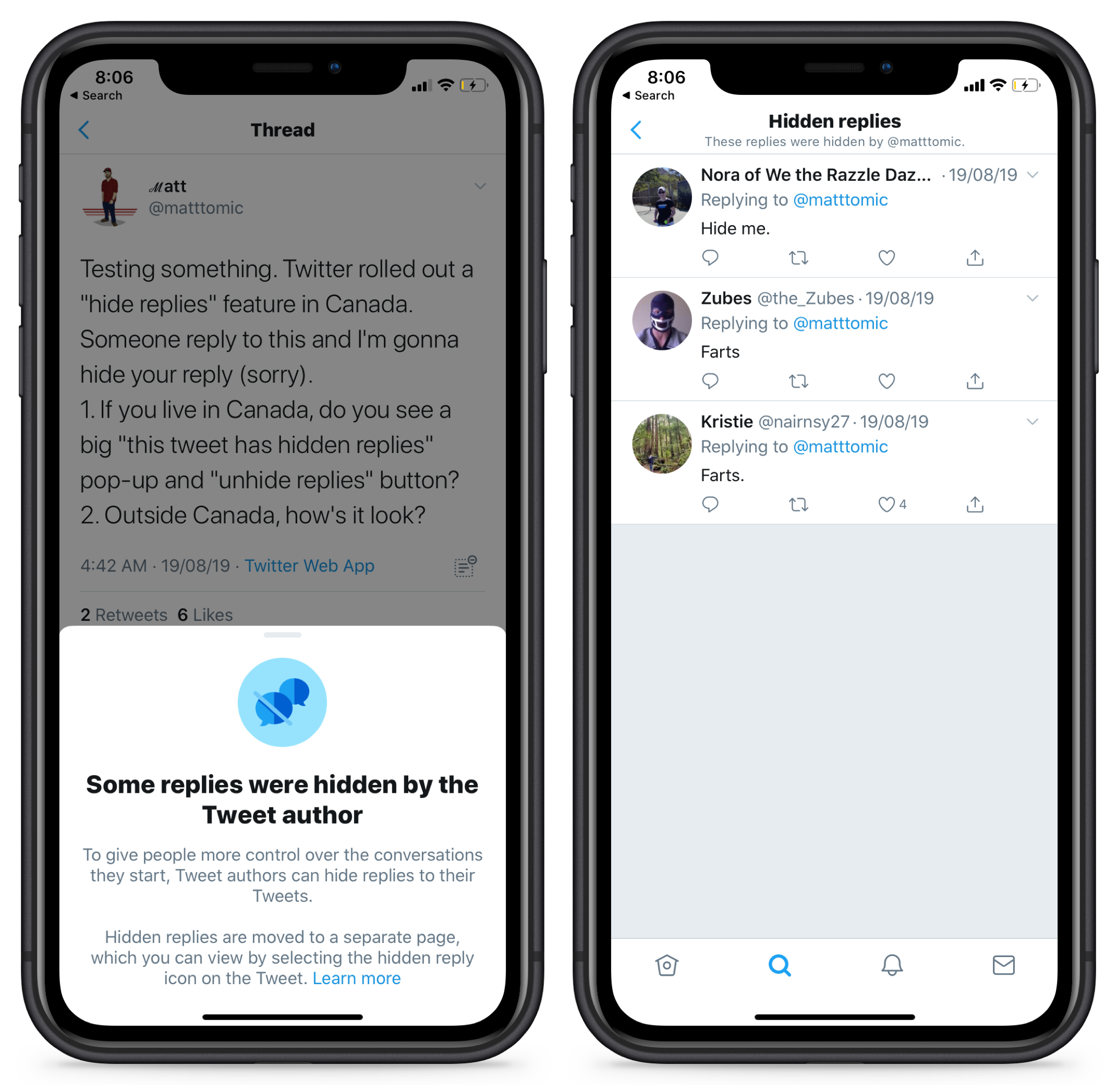Additional notes
The first two items, Tweet Submission Flow and Live Pipeline, were designed entirely
by me with a fantastic engineering team backing me up. The next two, Twitter for Windows
and Twitter for Android, were started by me but shipped by two other designers and their
awesome teams.
I worked on
Hide Replies for about a year, but it didn't ship until about three years later, which was
entirely because of the efforts of the Health & Safety team still at Twitter. Finally, Safety Center was
something I championed and led the design of, but it took an enormous team to get it out the door.
I couldn't have made any progress without every single one of them.
See what I worked on at Microsoft


